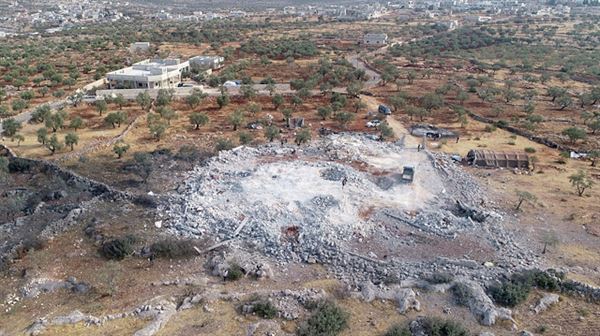The remains of the man who led the Daesh terror group as it tore through a broad cross-section of Iraq and Syria have been fully disposed of "appropri
The remains of the man who led the Daesh terror group as it tore through a broad cross-section of Iraq and Syria have been fully disposed of “appropriately,” the Pentagon said Monday.
Abu Bakr al-Baghdadi detonated a suicide vest he was wearing as U.S. forces were closing in on him in an underground tunnel during a late-night raid on Saturday, killing himself and three children in northwestern Syria’s Idlib province.
Joint Chiefs Chairman Mark Milley told reporters at the Pentagon that his remains were transferred to a secure facility where they underwent forensic DNA testing to confirm his identity before they were discarded.
“The disposal of his remains has been done and is complete, and was handled appropriately,” he said during a joint press conference with Defense Secretary Mark Esper.
Milley did not specify how the remains were disposed of, and he declined to answer if they were buried at sea similar to how the U.S. dealt with the body of former al-Qaeda chief Osama bin Laden who was slain in 2011 under former President Barack Obama.
But Milley said the disposal of Baghdadi’s remains was done in accordance with U.S. standard operating procedures.
In announcing his killing, U.S. President Donald Trump said Sunday that Baghdadi attempted to escape via a tunnel that ultimately was a dead-end, taking three young children with him “to certain death.”
But as U.S. forces led by a canine closed in, Baghdadi killed himself and took the lives of the children as the tunnel caved in around him following the explosion.
The U.S. has declined to provide the name of the dog who chased Baghdadi in his final moments, but Milley said that the animal was “slightly wounded” during the operation, but is expected to fully recover from his injuries.
He further said two adult males were taken into U.S. custody during the raid, and are being held at a secure location. He did not offer additional details.
Trump said earlier Monday before departing Washington that he is considering releasing video of the special forces mission, and Milley added that while the U.S. does possess photos and videos of the raid they are currently undergoing a declassification process.
“I think what you’ll see here in the coming days is we’ll set up some operation and tactical-level briefings by Central Command and you’ll be provided some video and photos, etc. of that,” he said.
Under Baghdadi, Daesh, also known as ISIS, spread over wide segments of Iraq and Syria beginning in 2013, eventually claiming the formation of a “caliphate” in the region as it plotted and carried out gruesome attacks that reached far beyond its main territorial bastion. It further set up local affiliates in other regions as it released heinous execution videos on to the internet.
Baghdadi had been a top target for both the Trump and Obama administrations, and had a $25 million bounty placed on his head.
As the U.S.-led coalition took back territories once under the terror group’s hold, Baghdadi increasingly stayed in the shadows, only rarely releasing pre-recorded audio messages to his followers.
